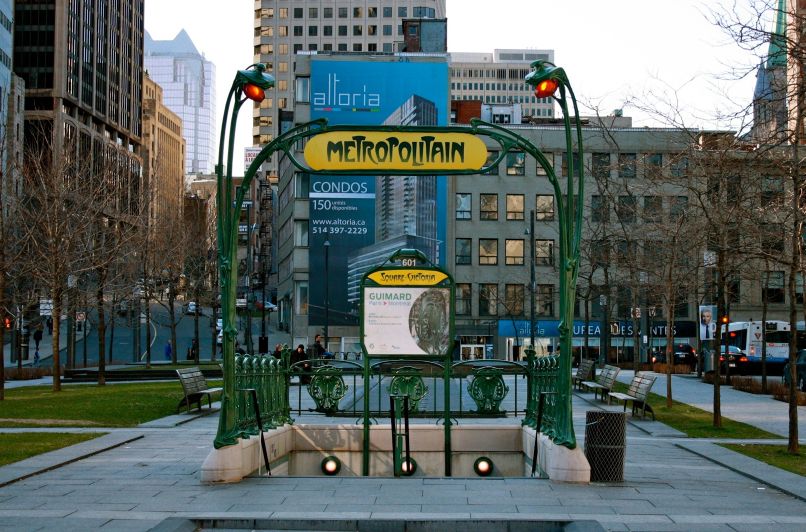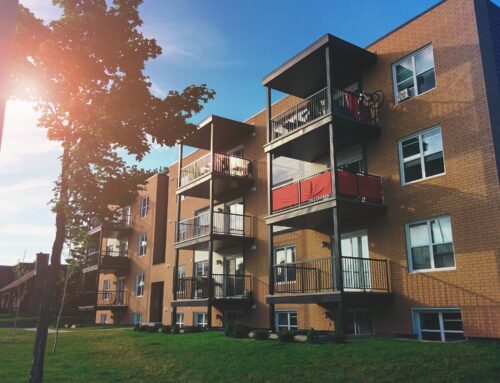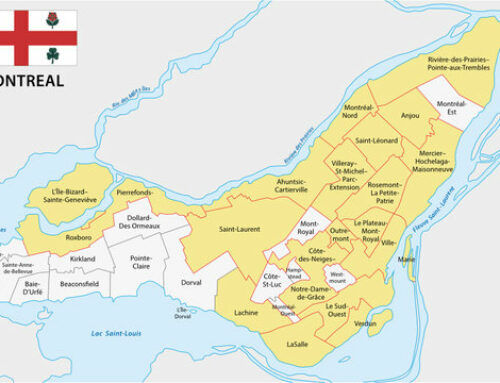In a city the size of Montreal, with nearly 2 million residents and more than 10 million tourists passing through every year, an effective public transportation network is essential. And the Montreal Metro system gets the job done. More than just a utility service that moves a million people a day from point A to point B and back, the Montreal Metro is a fascinating feature of a spectacular city. In order to help you better appreciate this remarkable system of rapid transit, here are 11 Strange Facts about the city’s metro stations.
Strange facts about the Montreal Metro stations
1. How many stations are there in the Montreal Metro system?
The 4th busiest metro system in North America—after New York City, Mexico City and Toronto—delivers over a million unlinked rides per day. The network has 300 kilometers of rails connecting 68 separate stations. When the Metro opened in 1966 it only had 26 stations.
2. What’s the busiest station in the Montreal Metro?
More metro trips begin at the Berri-UQAM station than any other. This statistic is based on people entering the turnstiles and does not include transfer trips. The next busiest stations are McGill, Henri-Bourassa, Guy-Concordia, and Longueuil–Université-de-Sherbrooke.
3. Who designed the Square-Victoria station, pictured above?
Following the example of the Moscow and Stockholm metro systems, the city of Montreal commissioned a different architect to design each metro station. Irving Sager designed the Square-Victoria station.
4. What is the deepest metro station in Montreal?
At 26.9 meters below ground, the lower platform at Charlevoix station marks the deepest stop in the Montreal Metro network. The upper platform at Charlevoix is 24.4 meters below ground level, which is not as deep as the two platforms in Lucien-L’Allier, which are both 27.1 meters below ground. Angrignon and Longueuil–Université-de-Sherbrooke are the two shallowest stations, at 4.3 meters.
5. What Quebecois art movement is represented in a number of Montreal Metro stations?
Numerous metro stations feature murals, frescos, sculptures and stained glass windows. You can find the artwork of Jean-Paul Mousseau at Peel station and stained glass by Marcelle Ferron at Champ-de-Mars. These two artists belong to Les Automatistes, a mid-20th-century group of French Canadian surrealists inspired by the theory of automatism.
6. Why is the Montreal Metro so hot in the winter?
As it happens, there is no heating in the underground metro. Just a few of the ticket booths and kiosks actually use heating units. The heat is only produced by human bodies hustling about, and by the motion of trains traveling through the tunnels. The heavy coats, scarves and gloves worn by Montrealers in the winter make the metro feel much warmer than in other times of year.
7. How many Montreal Metro stations are named after women?
Of the 68 stations on the Montreal Metro, 45 of them are named after historical figures, all men. Only three of them have females’ names, and they are actually named for geographic features in Montreal. One station bears the name of Queen Victoria (Square-Victoria), and the other two are for Cote-Sainte-Catherine and Île-Sainte-Hélène.
8. What is the shortest distance between two Montreal Metro stations?
Peel and McGill are the two closest stations, separated by only 297 meters. Saint-Laurent and Berri-UQAM are just 337 meters apart, and McGill and Place-des-Arts are 345 meters. The greatest distance between stations is 2.1 km from Cartier to De La Concorde.
9. Which metro station is featured in the 1997 film The Jackal?
An extended chase scene in the movie, starring Bruce Willis and Richard Gere, shows the Jackal (played by Willis) jumping into a track pit in the Lionel-Groulx Radisson station and fleeing into the darkness of the metro tunnel.
10. Whose voice announces the stops on the Montreal Metro?
The Télécité system—which announces the stops, service interruptions, and special messages on the Montreal metro—uses the voice of actress Michèle Deslauriers. She is less well-known for having appeared in a number of films and television shows. The original voice was that of actress Judith Ouimet.
11. And last but not least, what’s that funny smell when you enter a Montreal Metro station?
That, believe it or not, is the scent of hot peanut oil, which is used to treat the trains’ brake shoes, made from solid, Quebec-grown yellow birch. Peanut oil has a very high burning point, so high that it cannot be incinerated. Therefore it serves as the ideal treatment for the wooden brake shoes.
Ride on, Read on
Since 1996, ARIANNE Relocation has been helping families and professionals relocate to Canada from all over the world. To make their international transitions run more smoothly, we prepare them with tools and information about local housing, schools, services and transportation.
Check out some of these links to learn more about Montreal and about the services we provide.
- Online Relocation Guide for Montreal
- Reasons to love the Quartier des Spectacles
- Language laws in Montreal and Quebec
- International Schools in Montreal
PHOTO CREDIT: Square-Victoria-OACI station of the Montreal Metro (Wikipedia)







Leave A Comment